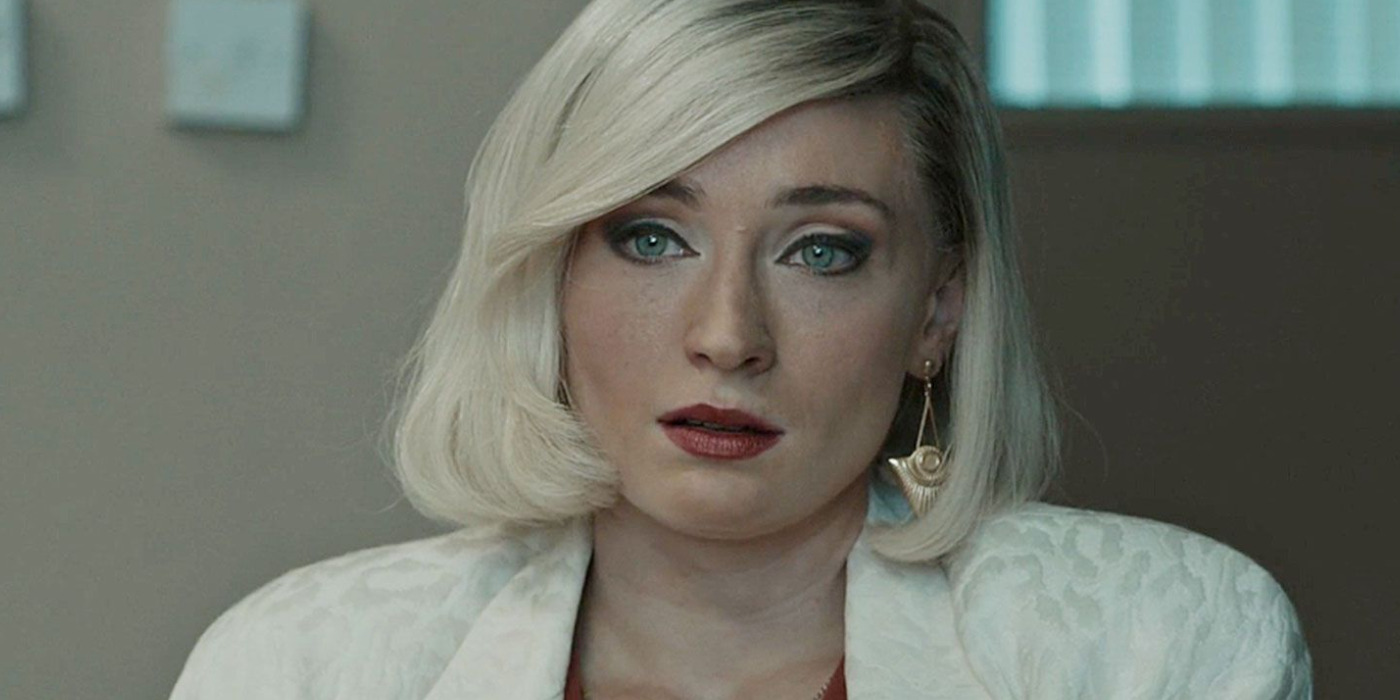Created by Anna Symon, the Sophie Turner-starrer crime drama show ‘Joan’ presents the story of a woman whose unfavorable life experiences compel her to become a notorious jewel thief. Set in 1980s England, the show follows Joan Hannington, an Irish woman born in poverty who strives to escape the confines of her abusive past. However, as she leaves her old life behind, her daughter, Kelly, gets taken away by social services—stripped of her relationship with her mother. Consequently, once the appealing opportunity to steal some jewels presents itself, the woman takes her chances. Thus, she begins pursuing her wildest dreams in an attempt to win custody of her daughter again.
In the process, Joan ends up becoming one of the most notable jewel thieves of her time, earning the title of “The Godmother.” The show charts a gloomy and glamorous course in narrating Joan Hannington’s on-screen storyline. Nevertheless, despite the cinematics of the protagonist’s experiences, the show maintains a healthy connection to reality through the character’s various criminal dealings. Therefore, as the show brings Joan to life, one can’t help but grow curious about the character’s origin and relationship to reality.
Anna Symon Presents a Dramatized Account of Joan Hannington’s Real-Life
Even though ‘Joan’ skirts the biographical tag, the show remains based on the real story of Joan Hannington, an actual diamond thief who was primarily active in the 1980s. In fact, the show utilizes her actual autobiographical novel, ‘I Am What I Am: The True Story of Britain’s Most Notorious Jewel Thief,’ originally published in 2002, as the base inspiration for its on-screen narrative. Furthermore, creator Anna Symon collaborated with the real Joan Hannington during the project’s production to ensure optimum authenticity within the slightly dramatized show.

Reportedly, Hannington was consulted on the script, with Symon and her co-writer Helen Black gauging the former’s satisfaction with their portrayal of the events. In certain instances—when the ex-criminal wasn’t happy with certain dialogues—the writers even took her input to chisel out the final script. Thus, for the most part, ‘Joan’ remains close to reality, bringing true events from Hannington’s life to the screen. Still, the narrative doesn’t shy away from tinkering with facts in a few areas—most notably so with the supporting characters, such as Hannington’s daughter, who goes from Debbie to Kelly on the screen. Ultimately, although ‘Joan’ isn’t without its occasional artistic liberties, the show remains deeply rooted in reality.
The Exploration of Joan Hannington’s Real-Life Misadventures as a Jewel Thief
Crime infamously ran rampant in England during the 1980s, with culture seeing the rise of numerous criminals such as Ronnie and Reggie Kray or David Hunt and his brothers. However, Joan Hannington paved a unique path within the same biosphere as a female jewel thief with nuanced motivations. Hannington, born in 1957 in the East End of London, grew up in a poor Irish household with a violently abusive father. As a result, she ran away from home at 13. Unfortunately, she only ended up back in an abusive situation after entering a relationship with Ray Pavey, her husband, with whom she had a daughter at 17.
Shortly after the birth of Hannington’s daughter, Debbie, social services took the kid away from the couple. Consequently, the mother’s apparent descent into criminality began. After lying her way into a West London jewelry store, Hannington found herself faced with an opportunity to stash away some diamonds from an unmonitored safe in the shop. As a result, she stole the diamonds—by swallowing them down her throat—in hopes that she could use the money to regain custody of her daughter. Although the scheme didn’t help her reunite with her daughter, it set up a signature process of jewel thieving and a network of underworld buyers that set Hannington on the path of criminality.
Soon afterward, Hannington’s paths crossed with Ronald Thomas “Boisie” Hannington, another con artist who dealt with antiques. As the two became partners—in crime and life, both—Boisie helped the jewel thief expand her criminal horizons. Together, the couple allegedly reached a millionaire status in the 80s. As per reports, she continued stealing jewels by covertly swallowing them and even pulled a heist consisting of 20 diamond rings and bracelets, estimated at £400,000. Eventually, Boise died after an insurance fraud scheme went south, and Hannington decided to leave the life of crime behind. The birth of her son, Benny, in 1987 played an instrumental role in this decision, alongside a few dangerous encounters in her line of work. In the end, as Hannington turned a new stone, she remained free of any criminal charges for any diamond thefts.
Joan Highlights Hannington’s Relationship With Motherhood
In bringing the real life of Joan Hannington to the screen, ‘Joan’ focuses on the most relatable aspect of the actual woman’s narrative: her heartbreaking relationship with her daughter. Since a reunion with Debbie was the real-life impetus behind Hannington’s foray into the world of crime, Anna Symon wanted to showcase the vulnerability of the woman’s situation through the show. For the same reason, the narrative taps into Joan’s on-screen relationship with Kelly to humanize the character, presenting a unique depiction of a crime boss.

Sophie Turner, the actress who brings Hannington’s cinematic counterpart to life, spoke with Harpers Bazaar about the same, discussing the pull she felt toward the character. “Joan, at her core, is a mother who loves her child and will do anything for her,” Turner shared. “Mistakes are made along the way, and it ends up being quite tragic for her, but she’s fighting for her child. I think any mother that watches this will be able to relate to it.” Consequently, the show’s overwhelming sense of realism—from its relationship with true crime to the story’s narrative themes—collectively stem from Joan Hannington and her actual experiences.
Read More: Joan Hannington: Where is the Ex-Jewel Thief Now?


You must be logged in to post a comment.